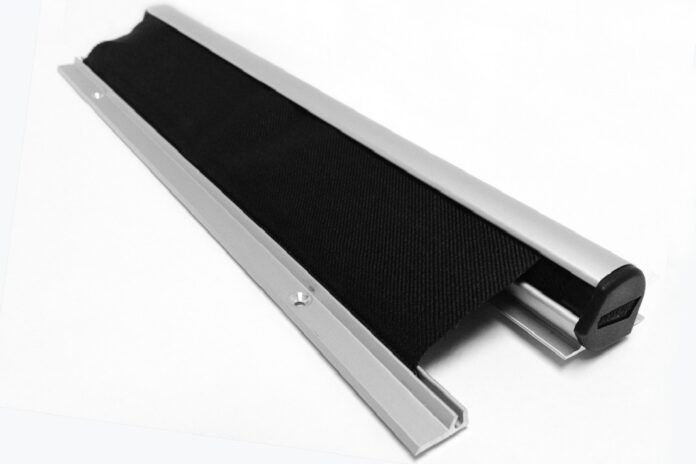
Not all finger protection devices are made the same – that’s the message from Strand Hardware, which is urging customers to apply the “gold standard” for safety and durability. BS 8613 specifies requirements and test methods for durability, strength and effective function of finger protection. This includes assessment of durability and effectiveness applied to conditions and temperature.
But not all products sold in the UK meet this standard. In recent years, the market has been flooded by cheap imports , according to Strand Hardware’s representative, and many of those imports have components that are far from durable, they say. Often made from plastic, such imports can become brittle and break, Stand Hardware’s representatives say, rendering them hazardous.
Marketed as ‘the UK’s market leader in the supply of quality finger protection’, Strand Hardware claims to only stock products that ‘meet the mark’. All BS 8613 products must clearly bear manufacturer markings and classification, making them easy to identify.
Craig Fox, Strand Hardware’s sales director, said: “None of our stock can be defined as ‘one product fits all’. Our extensive range provides devices for various door materials and applications. We prefer to work closely with customers to provide the ideal solution for their project needs.”
In addition to product durability – some products come with a lifetime guarantee – other benefits to buying quality include bespoke sizes for items up to 2500mm and special RAL-powder-coated finishes for customisation. Often, buying choices come down to budget, added Craig, but safety should never be compromised, he argued. “When it comes to finger protection, don’t be tempted to buy cheap. It makes sense to buy once and buy quality.”
BS EN 8613: 2017 defines finger protection as “a device intended to minimise the risk of crushing injuries to fingers in the gap between the hanging stile of the door leaf and the door frame”. In premises used by the public – especially premises used by children, elderly people or vulnerable adults – for example retail establishments, schools, hospitals, care homes and health centres, it is essential to minimise such risk. When it comes to the development and management of commercial buildings, risk assessments and the identification of appropriate solutions is essential.
British and European standards provide specifiers, architects/designers, health and safety professionals and facility managers with guidance as to what works well, what type of devices should be applied to various door sets, what’s durable and essentially, what is safe to use. It is estimated that between 40,000 and 80,000 accidents occur every year, mainly involving children who trap their fingers in doors, leading to serious injury. Many more minor injuries are believed to go unreported.
The BS 8613 standard is a benchmark to which professionals can refer, adherence to it can fulfil a duty of care and foster an understanding of appropriateness and performance values. It can also assist manufacturers to design fit-for-purpose products. Various types of finger protection devices are available; some are integrated within the door system, others cover the gap between a door and a frame. For more information about finger protection, or assistance with specification, email info@strandhardware.co.uk or call 01922 639 111.



